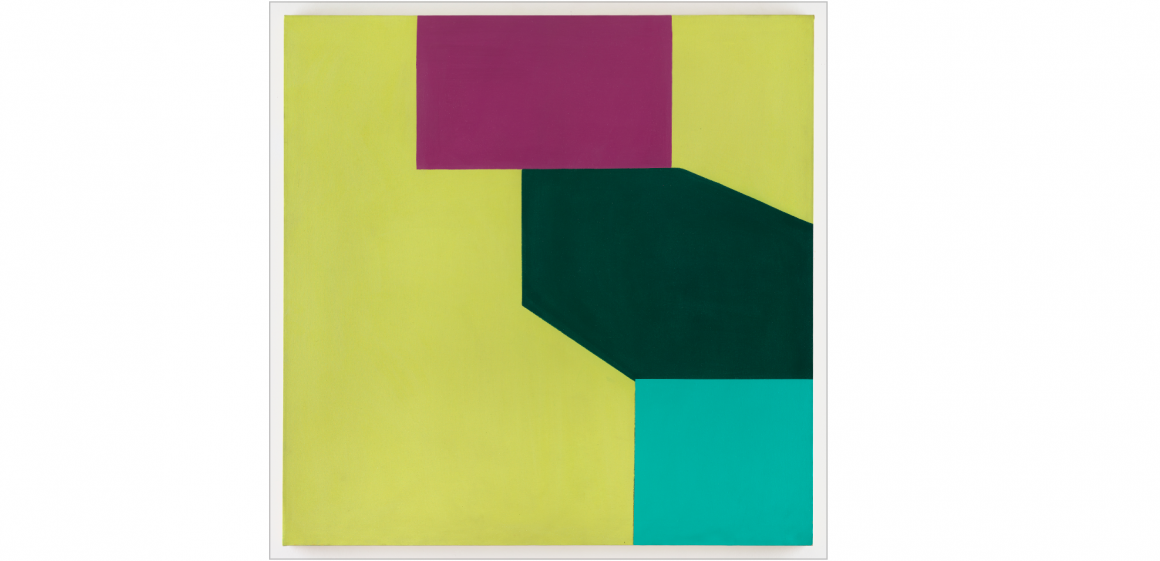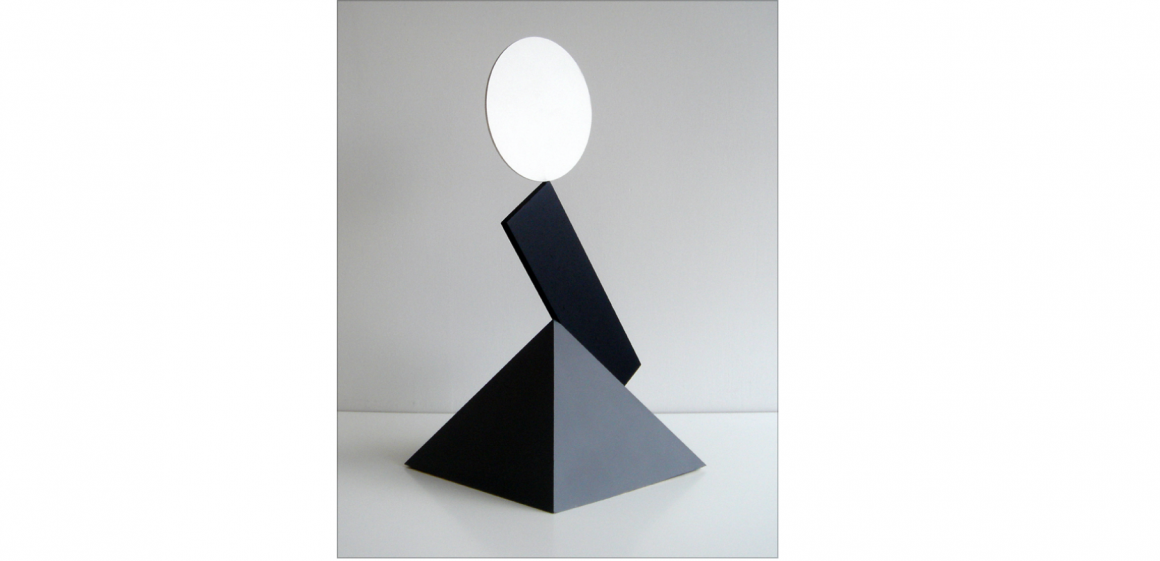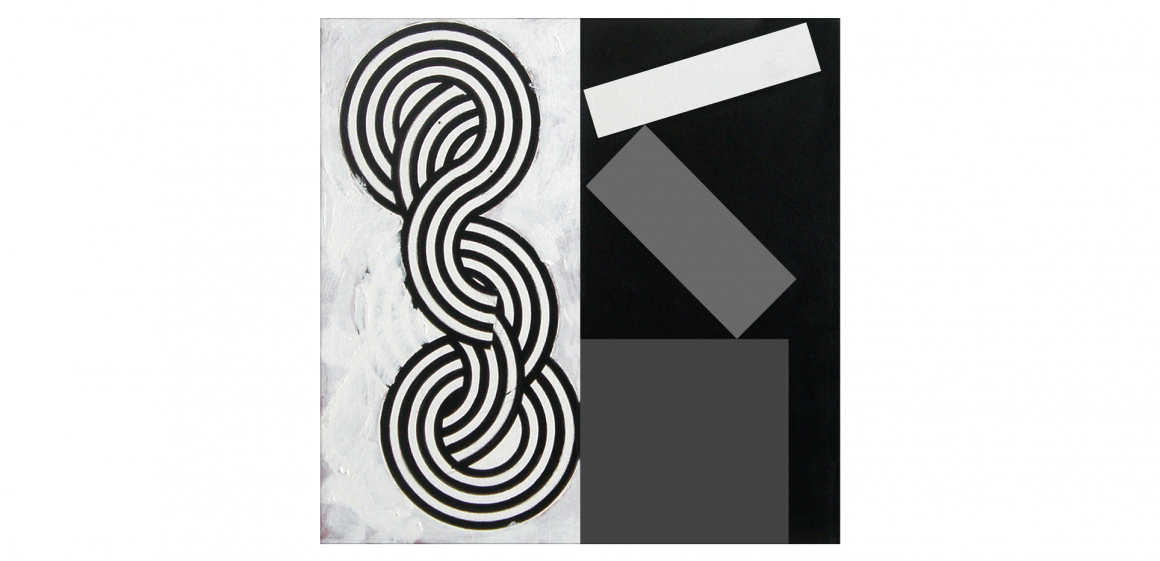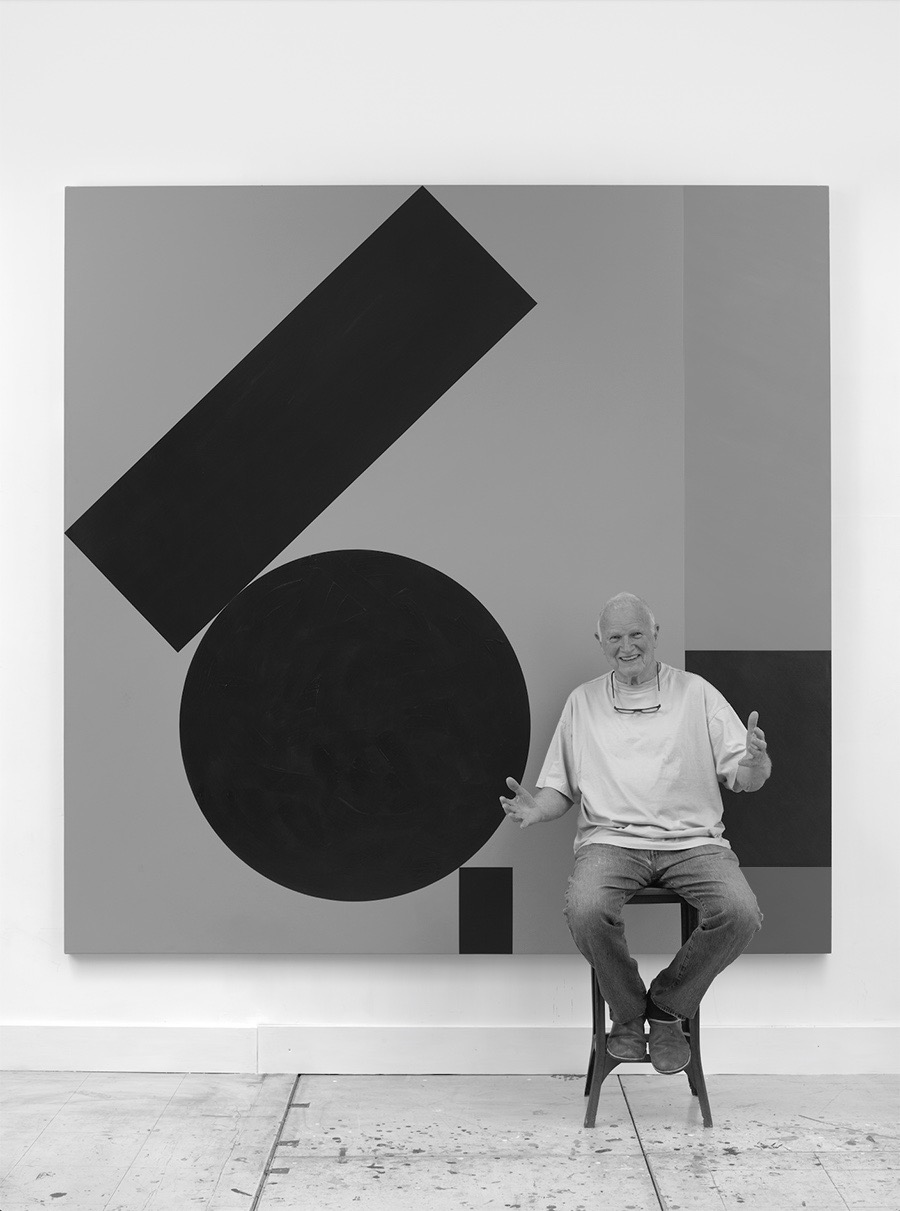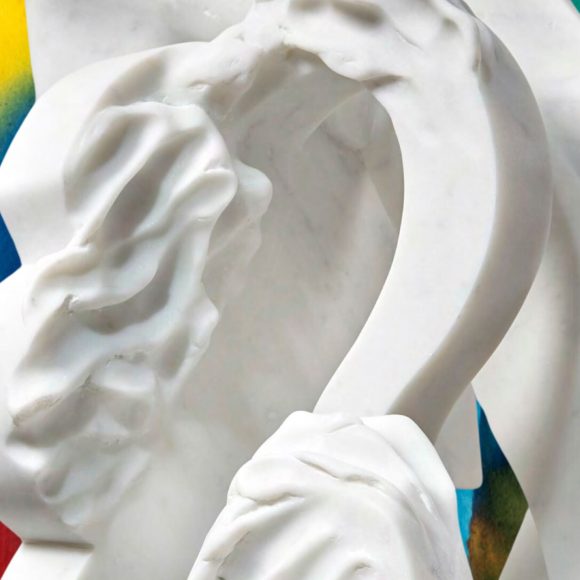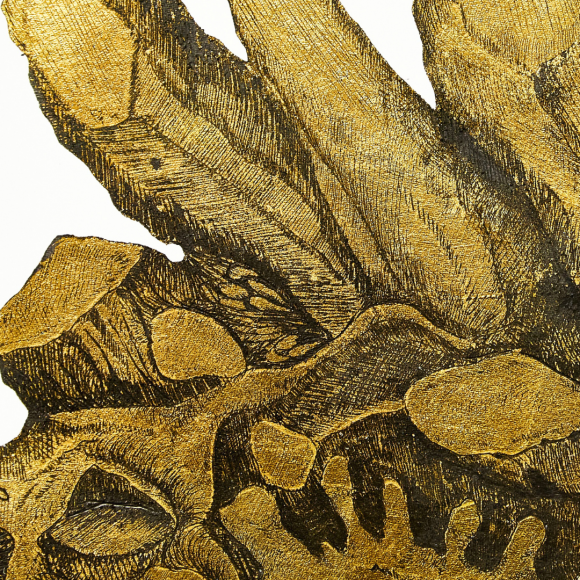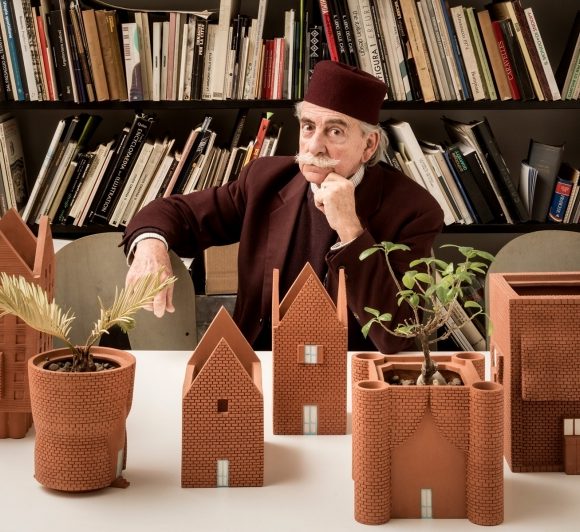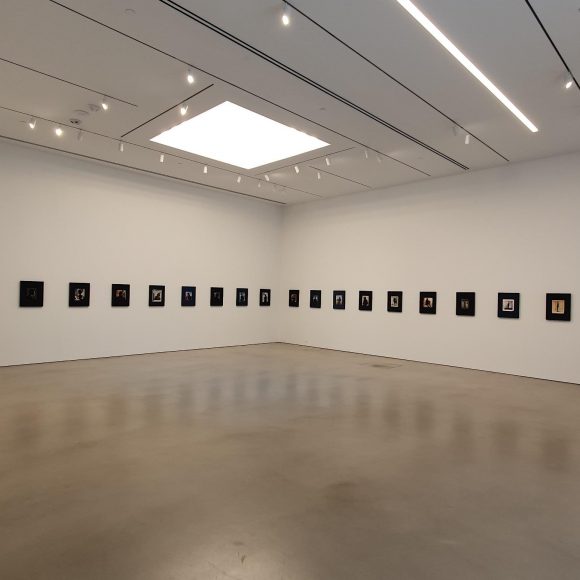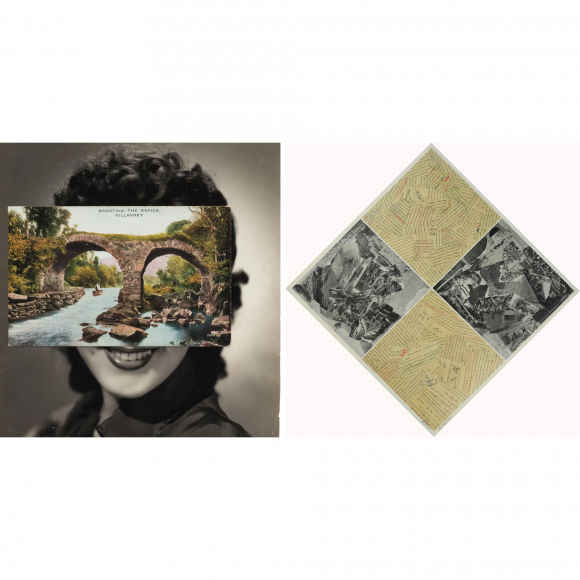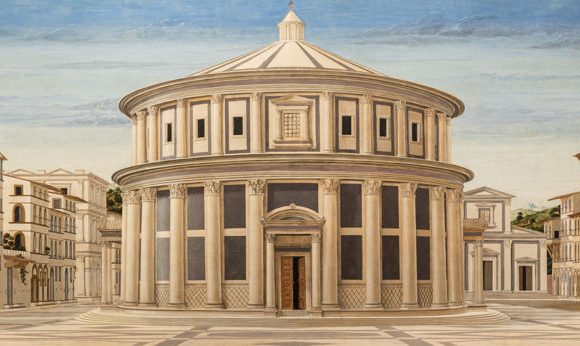PAUL HUXLEY
Paul Huxley RA (b. 1938, UK) holds a singular position in the evolution of post-war British abstraction. His geometric paintings and structures are rooted in the investigation of spatial relationships and chromatic orchestration, creating a dynamic interplay between formalism and psychological charge.
In 1964, Huxley was included in ‘The New Generation’ exhibition at the Whitechapel Art Gallery, curated by Bryan Robertson, which amplified Huxley’s position among a cohort of emerging artists who reimagined abstraction through a transatlantic lens. During this landmark exhibition, Huxley’s ‘Fluid Series’ received much critical acclaim and led to his formative period in the United States. There, he developed friendships with artists Mark Rothko, Barnett Newmann, and Helen Frankenthaler, which deepened his engagement with the metaphysical dimensions of painting, as well as the broader cultural milieu of 1960s America.
In 1965, Huxley was awarded a Harkness Fellowship, extending his residency in New York for two more years and culminating in his first solo show there. The ‘Key Series’, developed during this period, represents a decisive break with Huxley’s earlier monocentric canvases. These works inaugurated a method of division and sequencing that has since become a defining characteristic of his oeuvre.
Educated at Harrow School of Art and the Royal Academy Schools, Huxley has made a profound impact on contemporary art both as an artist and educator. From 1986 to 1988, he was a professor at the Royal College of Art, significantly shaping the next generation of artists. His educational contributions to the art world have since earned him widespread recognition and numerous accolades. His iconic commissions include the Piccadilly Flags in 2022, the Azerbaijan Pavilion at the Venice Biennale in 2015, and an exhibition at the Royal Academy of Arts in 2019.
Selected Exhibitions
Museum of Modern Art, USA; Guggenheim Museum, USA; Royal Academy of Arts, UK; British Pavilion, Venice Biennale, Italy; 56th International Art Exhibition, la Biennale di Venezia, Italy; Tate Gallery, UK; The Queen’s Gallery, UK; Whitechapel Art Gallery, UK; Serpentine Gallery, UK; Whitworth Art Gallery, UK; Liverpool Biennial, UK; Royal College of Art Retrospective, UK; Hayward Gallery, UK; China National Museum of Fine Arts, China; Kunstmuseum, Germany; Mark Rothko Art Centre, Latvia; Third Biennale of the Japanese Committee for Cultural Freedom, Japan; Cure Parkinsons Trust, Bonhams, UK; Chang Art Beijing, China; Rowan Gallery, UK; Young Contemporaries, R.B.A. Galleries, UK; Kornblee Gallery, USA; St Regis Hotel, Singapore; Gallery 7, Hong Kong; Galleria da Emenda, Portugal; Watergate Gallery, South Korea; Art in Focus, UK.
Selected Collections
Tate Gallery, UK; Art Gallery of New South Wales, Australia; Art Gallery of South Australia, Australia; Art Gallery of Ontario, Canada; Museum of Contemporary Art, Australia; Museum of Modern Art, USA; Victoria & Albert Museum, UK; Walker Art Gallery, UK; Whitworth Art Gallery, UK; Fitzwilliam Museum, UK; Royal College of Art, UK; Ulster Museum, UK; Szépsaüvészeti Müzeum, Hungary; Technisches Museum, Austria; Centro Cultural Arte Contemporaneo, Mexico; Arts Council of Great Britain, UK; British Council, UK; Government Art Collection, UK; Moroccan Government Collection, Morocco; Contemporary Art Society, UK; IBM, UK; Chase Manhattan Bank, UK; Asian Commerce, Hong Kong; Bristol-Myers Corporation, USA; British Airways, UK.
Journal
Interested in Paul Huxley’s work?


